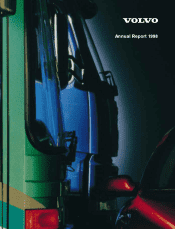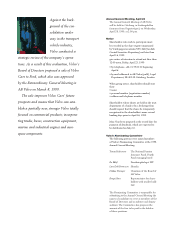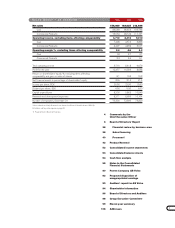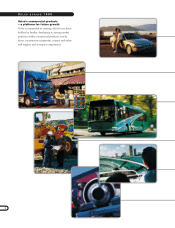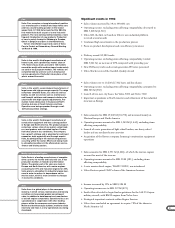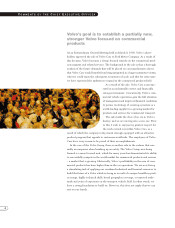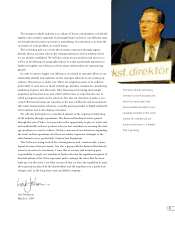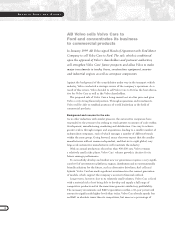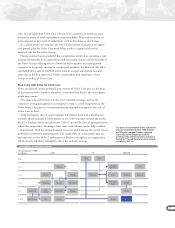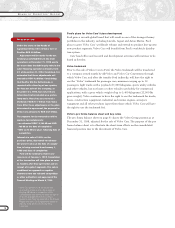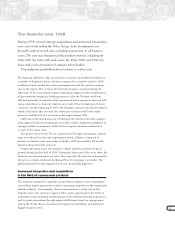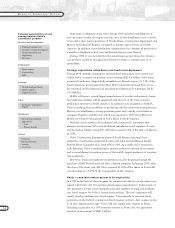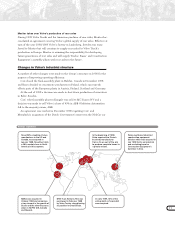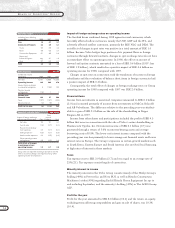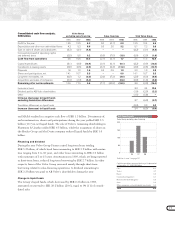Volvo 1998 Annual Report Download - page 9
Download and view the complete annual report
Please find page 9 of the 1998 Volvo annual report below. You can navigate through the pages in the report by either clicking on the pages listed below, or by using the keyword search tool below to find specific information within the annual report.
7
sales. It is possible that Volvo Cars will not be in a position to match its com-
petitors in terms of total expenditure on general R&D. This could result in an
increasing gap in key areas of technology, such as drivelines or electronics.
As a stand-alone car company, the level of investment required of an aggres-
sive growth plan for Volvo Cars would thus involve a significant level of
financial risk for the Volvo Group.
Having analysed and considered the complexities involved in operating a part-
nership, the benefits to be gained from full ownership clarity, and the benefits to
the Volvo Group of being able to devote its full economic and management
resources to its growth strategy in commercial products, the Board of AB Volvo
concluded that a sale of 100% of Volvo Cars to a major automotive manufac-
turer was in the best interests of Volvo shareholders and employees, Volvo
Group as well as of Volvo Cars.
Ford is the right home for Volvo Cars
Volvo considered various potential new owners of Volvo Cars and, on the basis
of discussions with a number of parties, concluded that Ford is the most appro-
priate new owner.
The value placed by Ford on Volvo Cars’ Swedish heritage, and on the
company’s strong management and employee team is a vital component in the
Volvo Board’s decision to recommend that its shareholders approve the sale of
Volvo Cars to Ford.
With worldwide sales of approximately 6.8 million units and a distribution
network which includes 15,800 dealers in over 200 countries around the world,
Ford is a leading vehicle manufacturer. Volvo Cars will be part of an organization
where the competitive advantages that come with volume can be fully realized.
Importantly, Ford has strong financial resources and is among the world’s most
profitable automotive manufacturers. The application of its financial capacity
and expertise to the Volvo Cars business is likely to strengthen an organization
which already exhibits profitability above the industry average.
1998
1998
1994
1998
GM Ford
Toyota Daimler
Chrysler VW
Nissan Honda Chrysler Fiat Peugeot Renault
ASIA
5-8
Unit production 1998
in millions
4-5
2-3
1-2
< 1
< 0.5
U.S EUROPE
Hyundai Suzuki Mitsubishi Mercedez
Benz BMW
Daewoo Fuji
Heavy Daihatsu Mazda Rover
Samsung Kia Isuzu Saab Volvo
1998
1998
Source: Volvo
The pace of consolidation in the automotive
industry accelerated during 1998: Daimler
and Chrysler merged; Daewoo acquired
Samsung and Ssyangyong; Hyundai
purchased Kia; GM increased its interest in
Suzuki to 10% and Toyota raised its interest
in Daihatsu to 51%.
Consolidation of automotive industry

